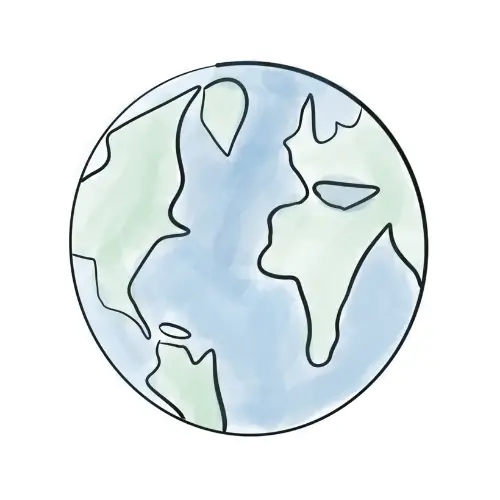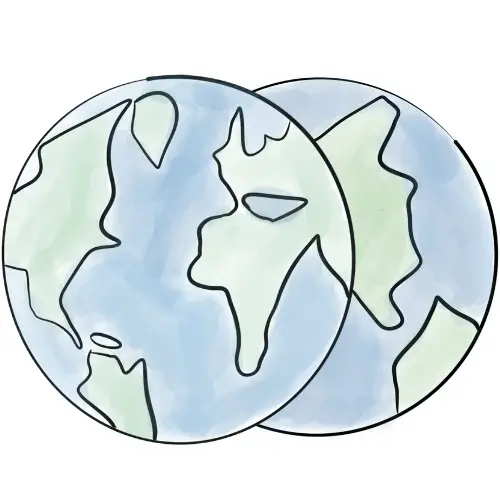When I joined a global team at a Fortune 500 company many years ago, scheduling meetings and routines suddenly became a much bigger challenge than before.
My stakeholders, colleagues, and direct reports were everywhere: I was based out of Europe, my manager was in the US, my team was in Asia-Pacific, and my clients were from every region imaginable, from North to Latin America to Africa and the Middle East to Japan and China.
It was clear that “Can we meet today at 3:00 p.m.?” was no longer going to cut it. A few years in this role taught me a lot. And after much trial and error, I finally figured out the etiquette and best practices for meetings with participants in different time zones.
If you’re in such a situation right now and you’re searching the Internet for advice, read on. Because in the rest of this article, I’ll give you my top tips on how to meet and coordinate with others across continents.
The Best Time to Have a Meeting
It would be so easy to give you an exact time and then move on. It would be just as easy to say that the best time is the one that is most convenient for you and the participants of the meeting, but you already know that—and that’s just lazy writing.
When it comes to scheduling international meetings, you and I both know that the answer is never quite that simple.
The best time to have a meeting depends on the location of that meeting’s participants. If the participants are in the Americas and Europe, the best time is in the morning US and the afternoon in the EU. If they are in Asia-Pacific and Europe, the best time is afternoon in APAC and morning in the EU.
Of course, you should always consider the exact location of the participants. In the United States, time zones differ from state to state.
The same is true for countries from one end of the continent to the other; a time that works perfectly for participants in Argentina may not work so well for those in Mexico, and vice versa.
Meetings Between the Americas and Europe

West Coast/Europe:
As a general rule of thumb, a meeting between participants in the US West Coast and Europe is best held in the early morning West Coast time and late afternoon European time.
East Coast/Europe:
A meeting between participants on the US East Coast and Europe is best held in the late morning US East Coast time and early afternoon European time.
Examples and Considerations:
If you’re scheduling a meeting between the US and the UK, 9:00 a.m. in Los Angeles, CA, is 5:00 p.m. in London. In contrast, 9:00 a.m. in New York City, NY, is 2:00 p.m. in London.
Remember that London is 1 hour ahead of Western Europe and 2 hours ahead of Eastern Europe. So a meeting at 5:00 p.m. London time would work for British participants, but might be too late for participants from the rest of Europe.
Meetings Between Asia-Pacific and Europe

South Asia/Europe:
A meeting between participants in South Asia and Europe is best held in late afternoon South Asian time and late morning/early noon European time.
East Asia/Europe:
A meeting between participants in East Asia and Europe is best held in the late afternoon/early evening East Asia time and early morning European time (the earlier, the better).
Examples and Considerations:
If you’re scheduling a meeting between London and Delhi, keep in mind that, in the summer, 11:00 a.m. in London is 3:30 p.m. in Delhi.
The further east you go, the later in the day it gets for participants from the Asia-Pacific region. For example, 9:00 a.m. in London is 4:00 p.m. in Beijing, China, 5:00 p.m. in Tokyo, Japan, and 6:00 p.m. in Melbourne, Australia.
Global Meetings

I know it’s probably not helpful to hear this, but try to avoid scheduling global meetings as much as possible; they’re rarely convenient except to the participants sitting in Europe.
When you have the option, it’s best to schedule two meetings instead of one: One at a time convenient for Eastern Hemisphere participants and another convenient for Western Hemisphere participants. (And don’t forget to record the meeting for those who cannot attend either.)
If you do need to schedule a global meeting, the best time is usually 2:00 p.m. London time (that’s GMT +1 in the summer and GMT during the rest of the year). Keep in mind that it will be very early for those on the US West Coast and very late for those in East Asia and Oceania.
Etiquette for Scheduling Meetings
Suppose you’re planning a meeting in several time zones and some participants need to attend in the early morning or late evening. Reach out to them or send them an email.
Explain to them that you do not have the option of scheduling the meeting during their work hours, apologize, and ask them if there’s a specific time or time slot that they prefer.
The key is to always ask and never assume.
Some people have to carpool their kids to school in the morning and would find it difficult to attend a Zoom call, but they don’t necessarily mind attending an after-hours meeting or two.
Others prefer to keep their evenings to themselves and their loved ones, but they would be totally fine attending meetings early in the morning.
A Neat Tool to Help You Schedule Meetings

One tool that provided invaluable during my tenure on this team was Time and Date‘s time zone converter. This tool allows you to schedule a meeting for any list of attendees, no matter how geographically dispersed they are.
Simply enter the cities or time zones where your meeting participants are located, and Time and Date’s time zone converter will show you what time it is in each of those locations—giving you clues as to whether it makes sense to schedule a call at those times.
And the best part? As long as you don’t mind the occasional ad, it’s completely free!

